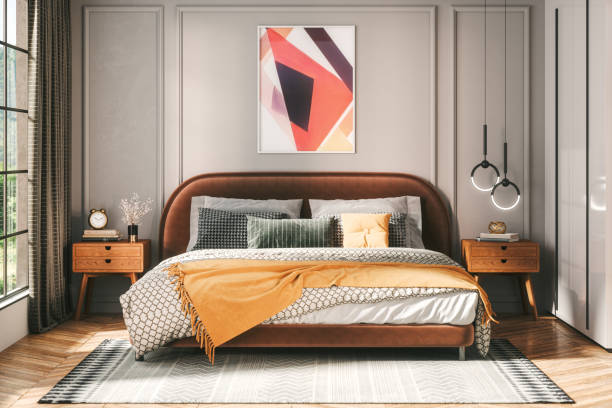Area Rug Placement Guide

Area rugs, which can range in size, are a fantastic and decorative way to cover some floor space in a room or protect flooring in high-traffic situations. Their purpose varies; they can be used to designate how an area will be used, add a pop of color to decor, or create comfort underfoot. Although there are many ways to use area rugs, there are also some guidelines for using them well. Keep reading for some area rug guidance!
Consider The Purpose of Your Rug
When choosing to use an area rug, first decide on the purpose. Are you trying to protect the flooring underneath? Add interest to your decor? Hide a big old stain? Area rugs can do any or all of these things. They are very good at preserving the condition of hardwood or other hard surfaces, or carpet, from foot traffic of people or pets. Consider using one with a rug pad in a hallway or foyer. Because they are inexpensive, area rugs can be swapped out easily if they become dirty or worn, or should your tastes change with the seasons. They can quickly freshen your decor.
Choose the Proper Size
Regardless of your purpose for using area rugs, it’s important to choose the proper size for your space. Generally speaking, an area rug should cover the center of a room: not all the way to the wall but not leaving a huge gap either. In living or family rooms, area rugs should cover the area between the major pieces of furniture, with at least the front legs of furniture on the rug. If possible, consider a rug that extends about 12” under the furniture. This type of placement will not only hold the rug in place but also invite people to have a seat and a conversation. A rug that is too small can cause visual confusion; it not only looks silly, it fails to anchor the room and can actually make your space seem smaller.
In a dining room, an area rug should define the space for the table and all the chairs, even when they are pulled out, to avoid damage and potential tripping hazards. Again, it can cover the majority of the floor, but not all of it. When a rug designates your dining space, especially if the space is part of a larger room, it’s inviting family and guests to sit down for a meal. If the rug is too small, the whole dining area can appear cramped and uninviting. If it’s too large, the purpose of the rug is lost.
In a bedroom, an area rug should be pushed against the wall behind your bed, and be wide enough so that any bedside tables are also on the rug. This placement allows you to step out of bed and onto a comfy rug instead of a cold floor. In addition, the rug should be long enough to extend beyond the bottom of the bed by about the same as the sides. Placing the rug in this way anchors and frames the bed.

Choose the Proper Placement
One more rule of area rugs: They don’t float. Aside from a runner in a hallway or kitchen, or a bathmat, the purpose of area rugs is to connect the important elements of the room, such as walls and furniture. They should be the proper size, oriented correctly, centered in the room and under the furniture. If used properly, area rugs will add a fresh new dimension to your decor.
When you’re ready to do some rug shopping, measure your space and check in with the helpful folks at Westport Flooring and Interiors. We can help you talk through options, review your needs and make some recommendations so you are sure to get area rugs that you love.

